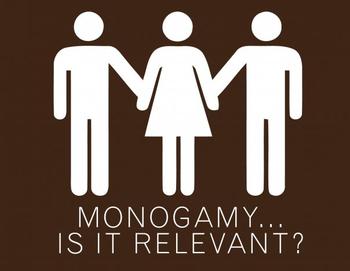 William Tucker, in his book Marriage and Civilization: How Monogamy Made Us Human, traces the links between Islam, polygamy, and violence. In part 2, we look at how polygamy coupled with Islam has continued to breed violence up to this very day.
William Tucker, in his book Marriage and Civilization: How Monogamy Made Us Human, traces the links between Islam, polygamy, and violence. In part 2, we look at how polygamy coupled with Islam has continued to breed violence up to this very day.
Tucker describes the Islamic Turks:
Like Mohammed , the invading Turks, who founded the Ottoman Empire in the thirteenth century, ignored the Koranic limitation of four wives and collected palaces full of concubines. Indeed, the emblem of Ottoman rule for the European imagination was always the sultan and his harem. In order to avoid dynastic wars among the numerous potential heirs, the Sultan chose a successor, then locked all the others in a special prison on the fifth floor of the Topkapi Palace where, when the heir reached maturity, they were all strangled.
Tucker moves from the Turks to the Wahhabi Movement.
The Ottomans, of course, were not the only Islamic power practicing and promoting polygamy and its attendant customs. The Wahhabi Movement, born at the time of George Washington, rallied Sunni tribesmen of the Arabian desert to the banner that, once again, the Islam being practiced in Mecca was not the “true Islam.”
They crashed into the Holy City, smashing works of art, and destroying some of Islam’s most sacred shrines, including Mohammed’s tomb. Then they established the version of Islam that still dominates life in Saudi Arabia. The Saudis have spent millions of their oil wealth in spreading Wahhabism throughout the Muslim world via madrasas— schools that teach young boys the version of Islam that we see in al Qaeda, the Muslim Brotherhood, and the Taliban.
While the Wahhabis are strict Islamists, they are, like so many Muslims before them, liberals when it comes to the number of wives a Muslim man may take. Mohammed bin Laden, one of Arabia’s most successful businessmen and father of Osama, had fifty-four children by twenty-two wives.
So what is it like in modern-day polygamous, Islamic countries?
In such societies, the frustrations of lower-caste Arab-Muslim men fester. Since conquest is no longer really an option, only martyrdom remains. If they cannot practice polygamy in this life, they trust that they will enjoy the fruits of the afterlife with seventy-two virgins.
“But,” it is often objected, “many Islamist terrorists we’ve read about were already married and even had children. What could be motivating them?” This is to judge Muslim men by Western standards. In monogamous, Western society, marriage for a man means settling down, supporting a wife and children, and taking part in family life. But in polygamous societies wives are a sign of wealth. Having only one wife can be a sign of inferiority. There is no Nash Equilibrium in Islamic or any other polygamous society. The demand for women always exceeds the supply and no one ever has enough. For men of modest means, women can seem almost unattainable.
Tucker reports several recent stories out of the Islamic world:
In a 2004 New York Times Magazine article, a graduate student in his twenties described what it was like growing up in Saudi Arabia. He said that he had never been alone in the company of a young woman. He and his friends refer to women as “BMOs— black moving objects,” gliding past in full burkas. Brideprices are steep and men cannot think of getting married until they are well established in a profession. All marriages are arranged and it is not uncommon for the bride and groom to meet at their wedding. Those without money are out of luck.
During the last few years of the Hosni Mubarak administration, the Egyptian government became so worried about couples having to put off marriage that it began subsidizing bride-wealth payments and sponsored mass marriages. In reporting on the early days of the Arab Spring, the New York Times found “the long wait for marriage” to be the second most pressing grievance in Egyptian society, behind only general poverty.
So what happens because of this shortage of women?
Yet because of the shortage of women, young girls have value and families refuse to lower the price of their assets. For this reason, an enormous number of marriages are contracted between cousins so that wealth is kept in the family. The only other avenue, of course, is bringing younger and younger women into the marriage pool.
Muslim countries are the world champions of child marriage. In Yemen, 52 percent of girls are married before age eighteen and 14 percent before age fifteen. Some are betrothed as young as eight. In 2008, a ten-year-old Yemenite girl named Nujood Ali made headlines when she threw herself upon the mercy of a court, asking to be released from a three-month-old marriage to her thirty-two-year-old cousin who had repeatedly beaten her since their wedding.
Obviously there are more and more Muslims living in western countries where polygamy is illegal. We can only pray that monogamy takes hold in this, the second largest religion in the world.
 William Tucker, the author of
William Tucker, the author of  William Tucker, in his book
William Tucker, in his book  William Tucker, in his book
William Tucker, in his book  In
In 